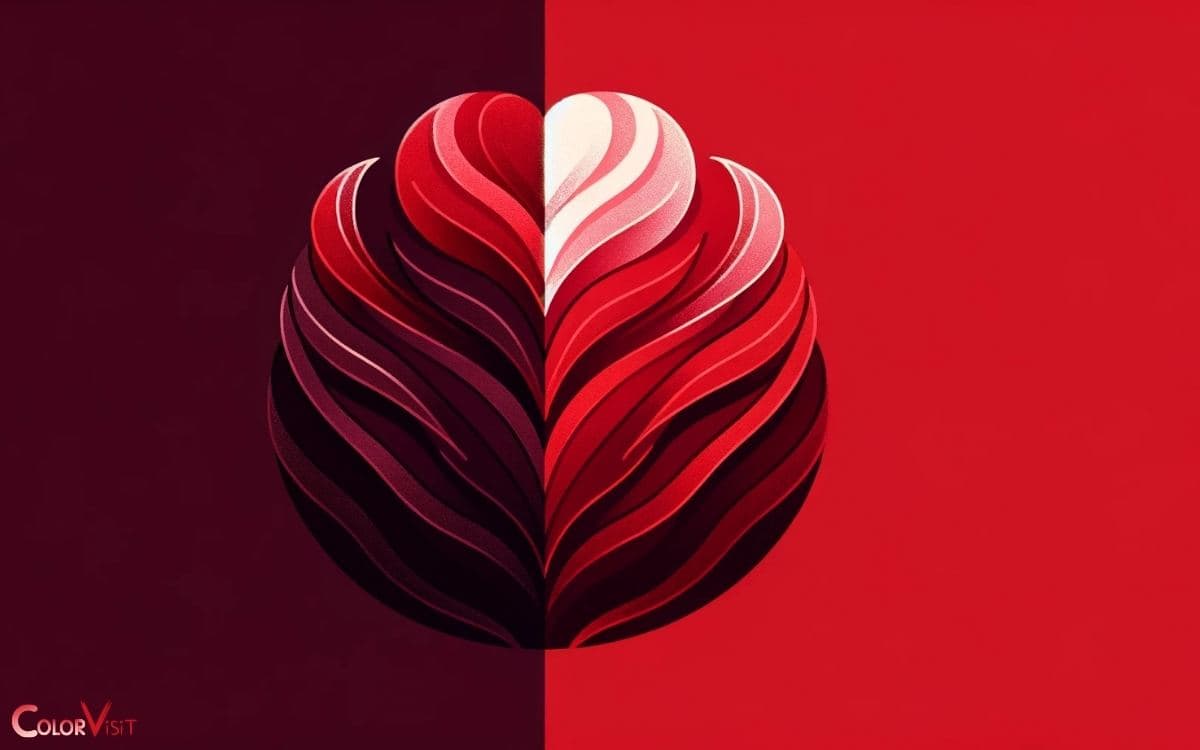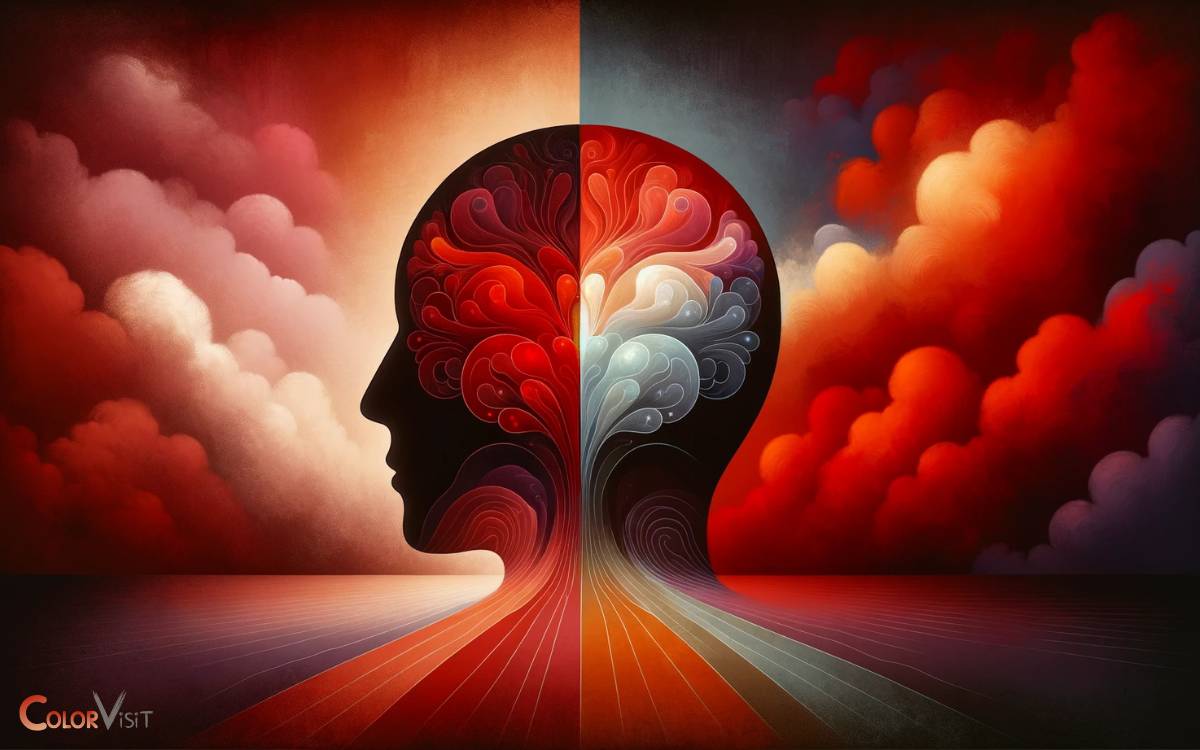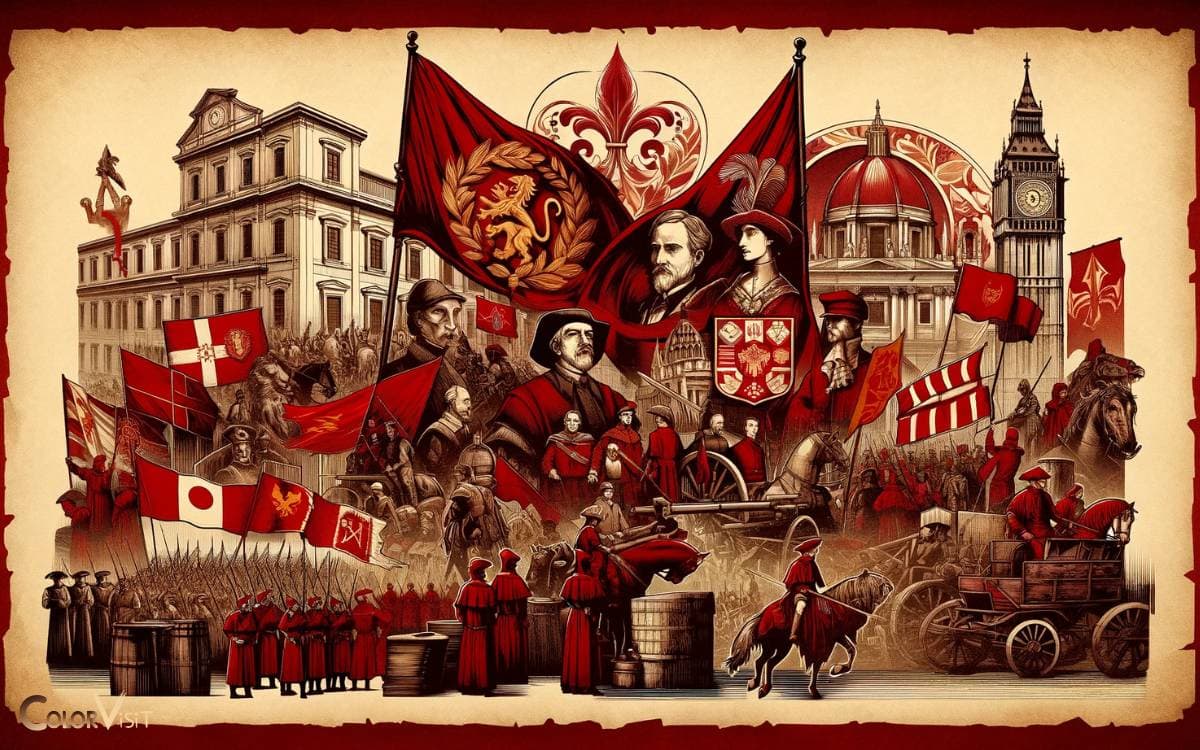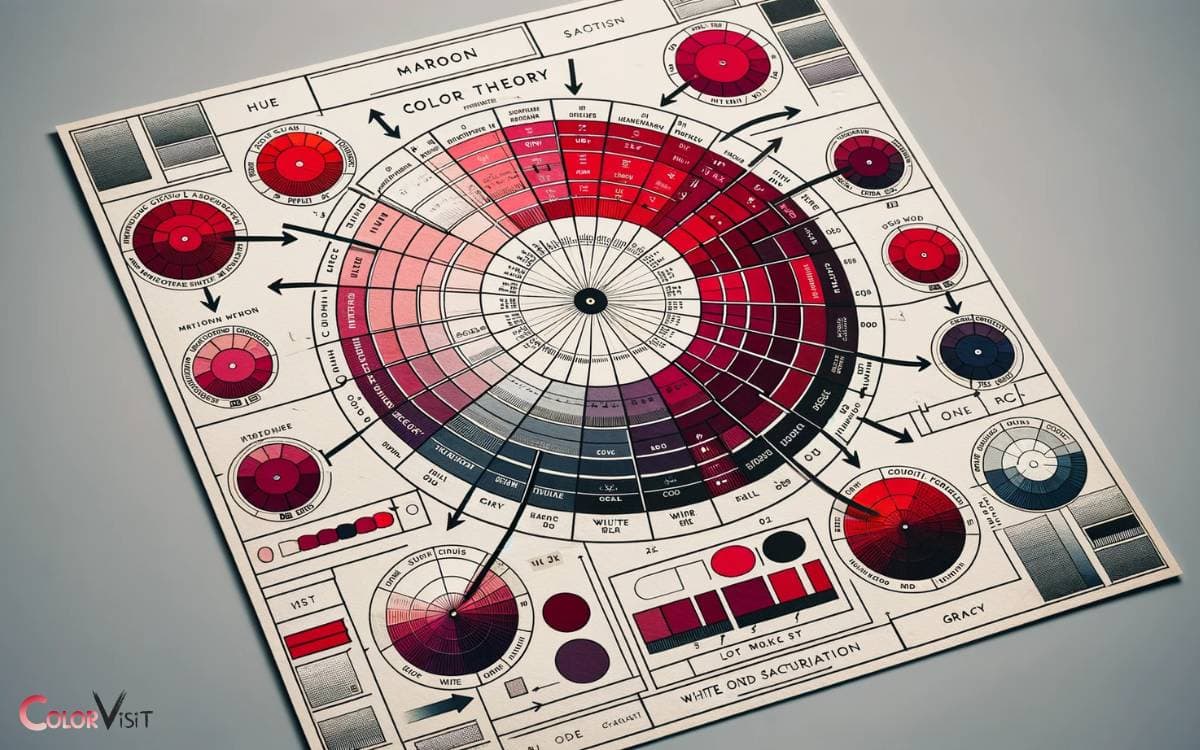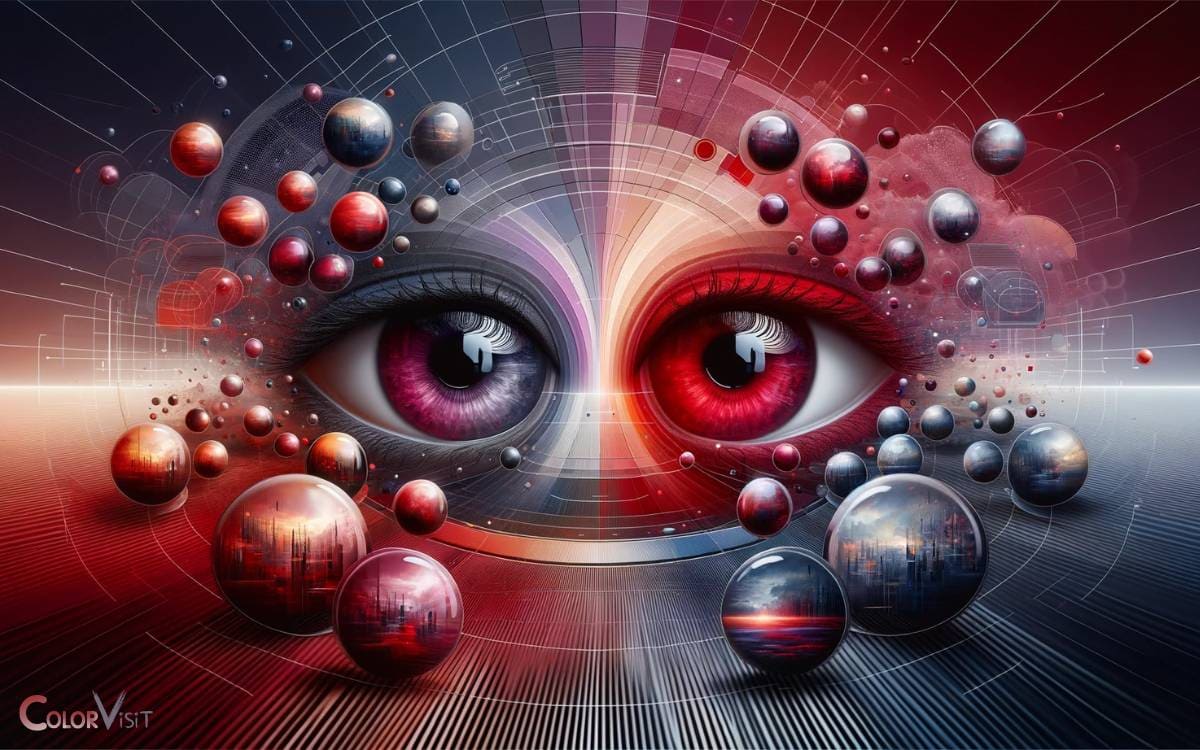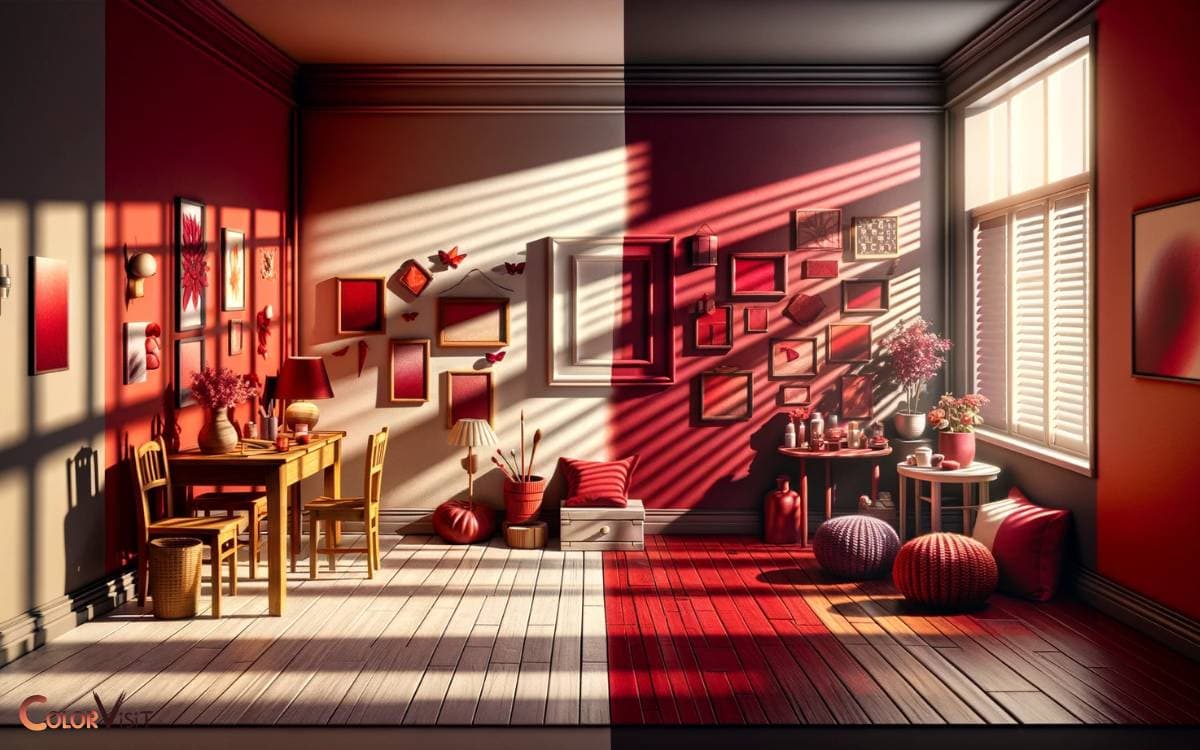Is Maroon and Red the Same Color? No!
No, maroon and red are not the same color. While both are shades within the color spectrum that includes red, maroon is a darker, brownish-red color, and red is a primary color that is vibrant and more intense.
Maroon is created by adding brown or black to red, resulting in a rich, dark shade that is often associated with formality and sophistication.
Red, on the other hand, is a primary color that cannot be made by mixing other colors. It is bold and eye-catching, often used to convey emotions such as love and passion.
For example:
While both maroon and red hold significant places in design and culture, their distinct visual characteristics cater to different moods and settings, making each color unique in its own right.
Key Takeaway
Historical Origins of Maroon and Red
The historical origins of maroon and red can be traced back to the ancient civilizations’ use of natural dyes.
Maroon, a dark reddish-brown color, was derived from the French word marron, meaning chestnut. It was often created by mixing red and brown pigments, and the earliest recorded use of the term dates back to the 18th century.
Red, on the other hand, has been a prominent color throughout history and was one of the first colors used in prehistoric art.
Early civilizations, such as the Egyptians, used madder root and alizarin dyes to achieve various shades of red.
The association of both maroon and red with power, vitality, and passion has persisted through the ages, making them integral parts of human expression and creativity.
Psychological and Emotional Associations
An article determiner is an essential component of any professional style of writing.
Psychological and emotional associations with colors play a significant role in our perception and interpretation of them.
Red is often associated with passion, energy, and power, while maroon evokes a sense of elegance, sophistication, and warmth.
Research in color psychology suggests that red can increase heart rate and evoke strong emotions, while maroon can create a feeling of comfort and security.
Understanding these psychological associations can provide insight into how these colors are perceived and utilized in various contexts, from branding and marketing to interior design and fashion.
These emotional connotations influence our responses to these colors, shaping our preferences and behaviors.
This lays the foundation for exploring the cultural significance and symbolism of maroon and red.
Cultural Significance and Symbolism
The significance of color in art, historical associations, and cultural interpretations all contribute to the rich tapestry of symbolism surrounding the colors maroon and red.
In art, these colors have been used by different cultures to convey specific meanings and emotions.
Furthermore, throughout history, these hues have been associated with diverse cultural interpretations, each reflecting the unique perspectives of different societies.
Color in Art
In art, maroon and red convey distinct cultural significance and symbolism, enriching visual narratives with depth and emotion.
Red, often associated with passion, love, and power, has been a prominent color in art across various cultures. Its symbolism ranges from the intense emotions of romantic love to the revolutionary fervor of political movements.
Maroon, on the other hand, carries its own cultural significance, often representing endurance, bravery, and strength.
In art, maroon has been utilized to convey a sense of stability, rootedness, and resilience, particularly in the context of heritage and tradition.
Both colors play a pivotal role in shaping the emotional and cultural resonance of artistic expressions, offering a rich tapestry of visual communication that transcends linguistic barriers and speaks to the human experience.
Historical Associations
Having delved into the cultural significance and symbolism of red and maroon in art, we now explore their historical associations, delving into the nuanced narratives that have shaped their meanings over time.
Throughout history, both red and maroon have held deep cultural significance and symbolism across various civilizations.
In ancient times, red was associated with life, vitality, and power, often used in rituals and ceremonies.
Maroon, on the other hand, has been linked to resilience, strength, and endurance, especially within the context of freedom and resistance.
The table below summarizes some historical associations and cultural significance of red and maroon:
| Aspect | Red | Maroon |
|---|---|---|
| Ancient Civilizations | Symbol of power and vitality | Associated with endurance |
| Medieval Period | Signified wealth and status | Used in religious rituals |
| Renaissance | Represented love and passion | Symbolized courage and strength |
Color Theory: Variations in Hue and Saturation
Color theory delves into the variations in hue and saturation that contribute to the perception of different colors.
Hue refers to the pure spectrum colors, such as red, blue, and yellow, while saturation represents the intensity or purity of a color.
Understanding these elements is crucial in comprehending how colors mix and interact with one another, impacting our perception and interpretation of the visual world.
Hue and Saturation Differences
The distinction between maroon and red lies in their hue and saturation, crucial elements of color theory that determine their visual appearance and impact.
- Hue: Maroon is a dark, brownish-red color with a purplish tint, while red is a primary color with a more vibrant, pure red hue.
- Saturation: Maroon is a highly saturated color with a deep, rich tone, while red can vary in saturation, from a bright, intense shade to a more muted or desaturated tone.
- Visual Impact: The differences in hue and saturation impact the emotional and visual perception of these colors. Maroon often conveys a sense of richness, elegance, and seriousness, while red is associated with energy, passion, and warmth.
Understanding these variations in hue and saturation is essential in color theory and design, as it allows for the precise selection and combination of colors to achieve specific visual effects and evoke desired emotions.
Perception of Color
Variations in hue and saturation play a critical role in the perception of color, impacting how colors are visually interpreted and the emotions they evoke.
- Frequently, these variations influence the overall aesthetic and psychological impact of a design.
- Hue refers to the pure spectrum colors, such as red, blue, and yellow, while saturation pertains to the intensity or vividness of a color.
- The perception of color is influenced by the interaction of light, the human eye, and the brain’s interpretation.
- Different hues and saturations can evoke specific emotional responses, with warmer colors like red and orange often associated with energy and passion, while cooler colors like blue and green may evoke calmness and tranquility.
Understanding these variations is crucial in design, as it allows for the deliberate manipulation of colors to achieve specific visual and emotional effects.
Color Mixing Effects
Discussing the interaction of hues and saturation levels in color mixing yields insights into the nuances of color perception.
When it comes to color mixing effects, there are several key points to consider:
- Hue Variation: Mixing different hues can result in the creation of entirely new colors. For example, combining yellow and blue produces green, showcasing the transformative potential of color mixing.
- Saturation Levels: Adjusting the saturation levels in color mixing can lead to a range of intensities within a particular hue. By altering the amount of gray in a color, the saturation level can be manipulated to create both vibrant and muted tones.
- Color Harmonies: Understanding how different hues interact and complement each other is essential in creating harmonious color schemes. Exploring color harmonies such as complementary, analogous.
Application in Fashion and Design
In the realm of fashion and design, maroon and red have been frequently utilized interchangeably to evoke different moods and aesthetics.
Both colors offer versatile options for designers to play with, allowing for a wide range of applications across various design elements.
Maroon is often associated with luxury, sophistication, and warmth, making it a popular choice for evening wear, interior décor, and branding.
On the other hand, red is known for its vibrancy, energy, and boldness, making it a go-to color for creating impactful statements in fashion and design.
Here’s a comparison of the key attributes of maroon and red:
| Attribute | Maroon | Red |
|---|---|---|
| Mood | Luxurious, Warm, Sophisticated | Vibrant, Energetic, Bold |
| Application | Evening wear, Interior décor, Branding | Statement pieces, High-impact designs, Branding |
| Associations | Elegance, Richness, Timelessness | Passion, Power, Excitement |
Impact of Lighting and Surroundings
The impact of lighting and surroundings on the perception of maroon and red is significant, as it can alter their tones and visual appeal in various settings.
This phenomenon occurs due to the interaction between light and the pigments present in the colors.
The following factors play a crucial role in shaping the perception of maroon and red:
- Intensity of light: Bright lighting may enhance the vibrancy of red, making it appear more vivid, while the subdued lighting can deepen the tone, making it resemble maroon.
- Surrounding colors: The presence of contrasting or complementary colors can influence how maroon and red are perceived in a given environment.
- Texture and material: The material on which these colors are applied can interact with light differently, affecting their appearance.
Understanding these factors is vital for leveraging the full potential of maroon and red in various applications.
Perceptual Differences and Personal Interpretations
Perceptual distinctions and personal interpretations of maroon and red are influenced by various subjective factors, contributing to individualized perceptions of these colors.
- These factors include cultural influences, personal experiences, and even differences in color perception among individuals.
- Cultural associations can heavily influence how a color is perceived; for example, in some cultures, maroon may be associated with luxury and wealth, while in others, it may be linked to mourning.
- Personal experiences, such as positive or negative emotions associated with a particular shade of red, can also shape individual interpretations.
- Furthermore, variations in color perception among individuals, such as variances in color sensitivity or color blindness, can lead to differing interpretations of maroon and red.
Understanding these subjective factors is crucial in appreciating the complexity of color perception and individualized interpretations of these hues.
Conclusion
While maroon and red may appear similar, they have distinct historical, psychological, and cultural associations.
Despite their differences, both colors hold significance in various aspects of society, including fashion, design, and symbolism.
Interestingly, studies have shown that red is the color most commonly associated with passion and excitement, while maroon is often linked to strength and endurance.
These subtle variations in perception contribute to the rich tapestry of human experience and interpretation of color.
